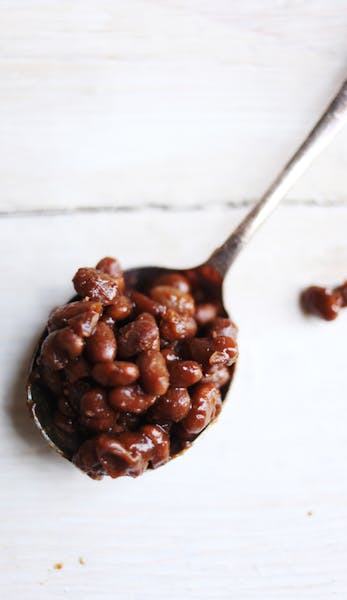In winter, there's nothing more comforting than a warm, meltingly tender bowl of beans — whether as soup, side dish or cassoulet.
The best starting point for those meals is dried beans, one of the most frugal items at the grocery store and healthiest forms of protein. Dried beans also can help many of us succeed at those New Year's resolutions to save money and eat better.
The problem is, dried beans scare home cooks. They require forethought because most recipes call for soaking them overnight. Plus, there's a lot of conflicting advice. To soak or not to soak? When to add salt? To cook in the soaking liquid or start with fresh water?
We contacted experts to sort through confusion: Nancy Harmon Jenkins, author of a half-dozen cookbooks focused on Mediterranean cuisine; Megan Lambert, a senior instructor at Johnson & Wales University in Charlotte, N.C.; and Steve Sando, owner of Rancho Gordo, an heirloom bean company based in Napa, Calif.
If you are a home cook who plans ahead, soak the beans ahead of time. Place the beans in a pot covered by 3 inches of water, and let sit for 6 to 8 hours. The next day, bring the beans to an initial boil and then turn down to a simmer. Depending upon the age and type of bean, it can take an hour and a half or longer to cook the beans. You may have to add water from time to time if the beans absorb it all. Do not salt the beans until they are tender because salt can turn out mealy beans instead of creamy ones. (Chickpeas and runner beans need to be soaked.)
If you are a procrastinator, beans may need to be a weekend meal or one enjoyed on a day when you are working from home. Or you can make a basic pot of beans one day to use in a recipe the next day.
Sando suggests a method from Russ Parsons, food editor at the Los Angeles Times. Place 1 pound of beans and 6 cups of water in a Dutch oven and bring to a simmer. Once simmering, put a lid on the pot and place it in a 350-degree oven. Cook until the beans are done, 1 to 2 hours; you want a tender bean, but dried beans produce a firmer end result than canned. The bean's skin can split, but you don't want the beans to be disintegrating.
Add 1 teaspoon of salt halfway through the cooking time. Parsons swears the beans taste better this way.
Consider doubling the beans that you need for a recipe and freezing half. That way you have them on hand to make soups, baked beans, salads or purees to spread on toasted bread.
Consider the slow cooker
Lambert, whose husband is Mexican, often cooks black beans at home. She soaks the beans overnight and then brings them to a boil. She then transfers the beans and their cooking liquid to a slow cooker, adding a chopped onion, a bit of lard and some epazote, a Mexican herb that some believe lessens beans' gas-inducing effects. Epazote can be bought fresh at Latin groceries or dried at Penzeys stores or online at penzeys.com.
Seasoning options
There are so many ways to season a basic pot of beans. Use salt pork, side meat or a smoked turkey leg. Use sautéed diced celery, onion and carrot. (This is Sando's recommended method with heirloom beans.) Use quartered onion, bay leaves and black peppercorns. Use garlic, sage and rosemary. For more ideas, check out the variations in the recipe for Jenkins' basic Tuscan beans.
The problem of gas
There is debate among our experts about how to lessen the gassy effects of eating beans. Some cooks insist on dumping the soaking liquid for this reason. But Sando and others insist it does not matter. The only remedy is to get your digestive system used to eating beans. Or as Sando says: "The secret is to eat more beans."
Where to buy
Buy beans where the turnover is frequent so you won't end up with old beans. We found the most diverse selection at Whole Foods and other food co-ops, where a pound can cost about $2.50 to $4. The ethnic food aisle at grocery store chains also offered a decent selection with prices between 99 cents and $1.89 a pound.
Heirloom bean sellers like Sando's Rancho Gordo guarantee that the dried beans are fresher. Order online at ranchogordo.com or Zürsun Idaho Heirloom Beans (zursunbeans.com). One interesting tidbit from Sando: His business was up almost 35 percent last year. "In this economy, that's wild," said Sando, whose beans sell for a premium at $5.50 for a pound. It appears dried heirloom beans may be becoming more mainstream.
